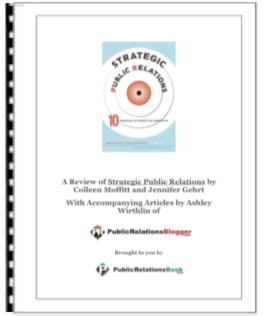________________________________________________________________________

Creating a public relations plan takes time, knowledge, and understanding of your company or client needs and wants. Here are some steps to ensure you capture those wants and needs in the plan creation process and that you create a plan that is relevant and useful to your company or client.
10 Steps to Creating a Successful Public Relations Plan
________________________________________

Creating a public relations plan takes time, knowledge, and understanding of your company or client needs and wants. Here are some steps to ensure you capture those wants and needs in the plan creation process and that you create a plan that is relevant and useful to your company or client.
- Know your company's or client's current situation. This is essential to knowing where the company now stands, where the company is able to go, what the company's market/industry looks like, and what direction the company is headed. This helps to put things in perspective.
- Know your resources. This can be a part of the first step, as it is a part of the situational analysis needed to understand where your company or client currently stands. This can help you better build your tactics and strategies while considering the budget, time, and other resource limitations the company or client may have.
- Know your objectives and goals. Also essential to the PR plan having success, you must know where the company hopes to go. Like driving with no directions, a PR plan with no goals or objectives is an aimless action with no knowledge of what could come, or even what results are desired. Be sure that the PR plan's objectives are in line with the rest of the company's overall objectives, and ensure that they are clear to all involved.
- Know and define your target audience(s). This means that you've defined your target buyer audiences and target media audiences. Each audience will need a different message and a different approach. Knowing these audiences will help you to frame your strategies and tactics so that you can effectively reach the people you hope to reach.
- List messages and strategies you will use to reach the target audiences you defined. These should be in line with the goals and objectives listed earlier; if they are not, the plan is already off to a somewhat bad start. Know that your strategies and messages also need to relate to one another, otherwise there is some disconnect happening that needs to be addressed.
- Define the tactics you will use to make the strategies you've listed a reality. These tactics will take the messages and strategies listed and make them happen. If, for example, a strategy is to enhance a company's brand awareness, tactics could include community outreach, social media use, press conferences, etc. There first needs to be a strategy defined before tactics can be addressed and assigned to a message.
- Create a time-line for implementation. This needs to be realistic but also challenging. Remember that there should be no lapses in the PR plan where press releases are being sent out, events are taking place, or media are being engaged. There needs to be constant reminder to the public that the company is alive and well, and that can be done with constant information being sent out.
- Delegate obligations and responsibilities to your team or your client's team to ensure all parts of the PR plan are completed. This helps to ensure that everyone is on board and that everyone knows their own responsibilities and duties. This is crucial to seeing the PR plan come to fruition. This step should be done with everyone involved so that no one feels over-burdened, left out, or given too much responsibility. This can also help to give everyone the feeling of responsibility since the plan was created with everyone together and not just one person's say.
- Create measurements of results/ success. To know if your plan is effective, create measurements and benchmarks for the tactics you implement. This is a place for the PR team to gauge the success of the plan and to see if goals were realistic. Creating measurements can also help to show what could have been done with the expertise and estimations of a PR firm or team.
- Review the plan after implementation and conclusion of the plan. This is the time when all who helped to create and carry-out the plan can come together and share their thoughts on what went well, what didn't go so well, and what could be done differently in the future. This needs to be done to ensure that future plans have a chance of being successful. This step can help to encourage group members to continue working for the company's success by giving everyone a chance to talk and contribute to the next planing.
Subscribe to:
Post Comments (Atom)






Comments (0)
Post a Comment